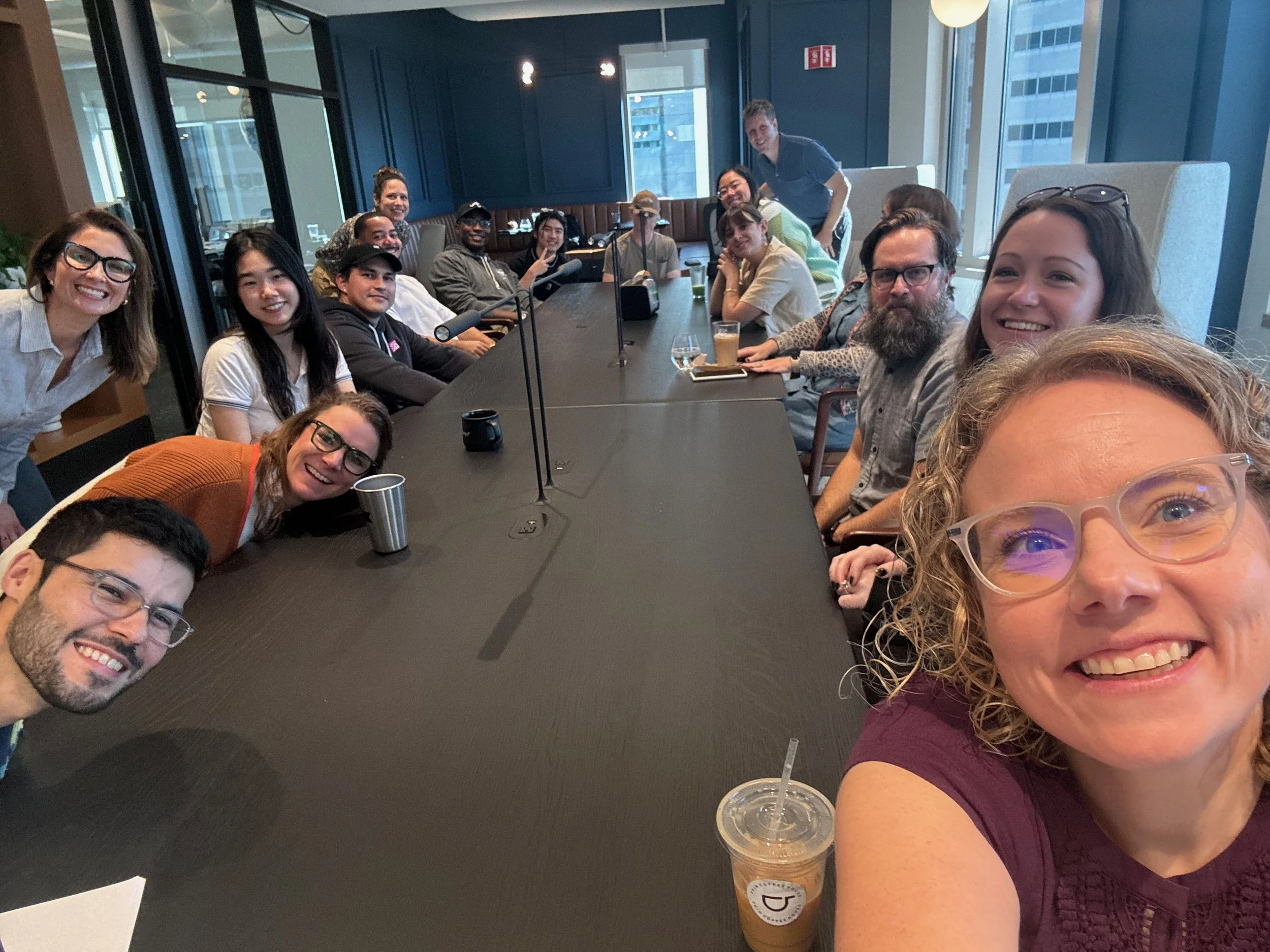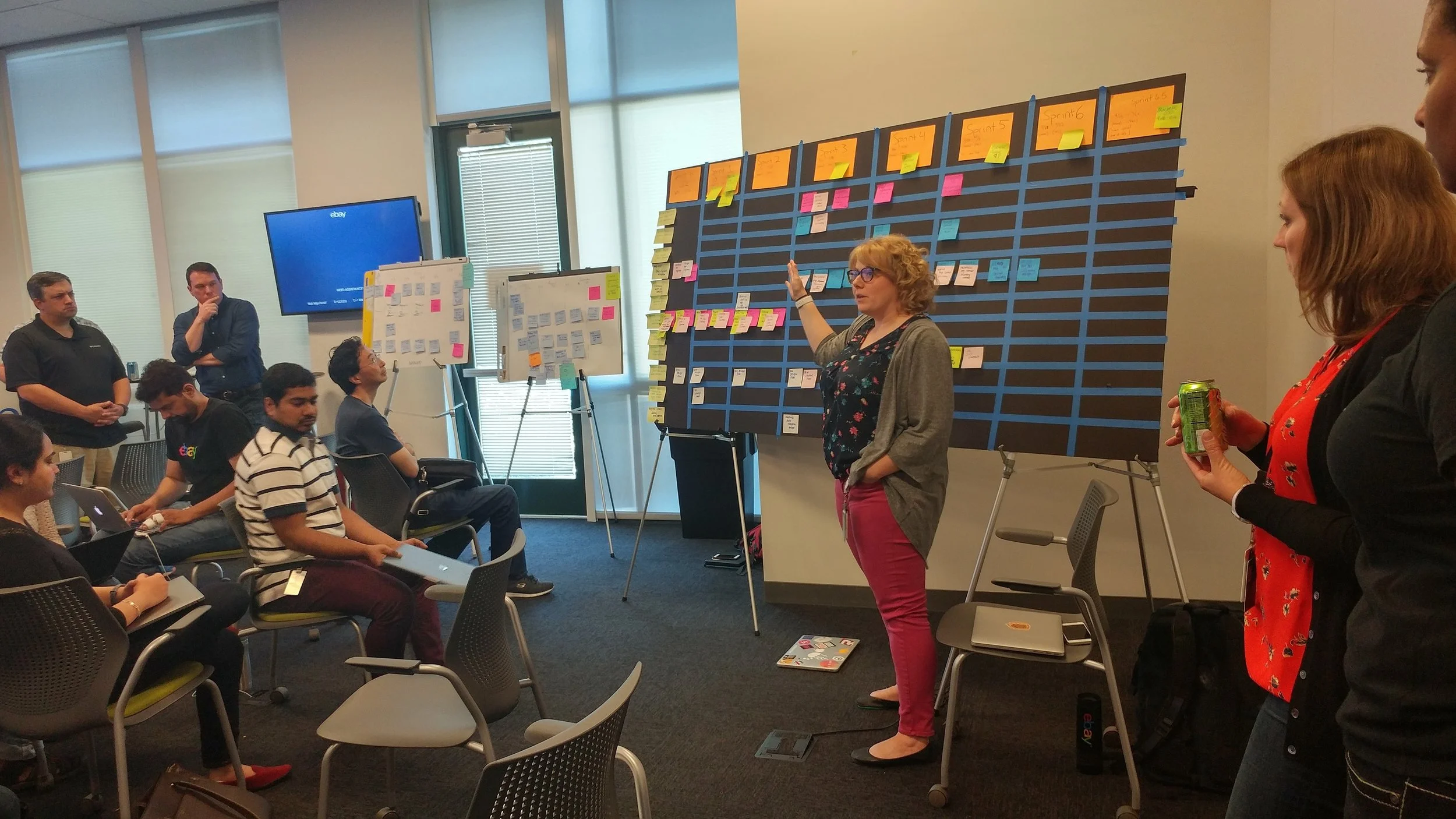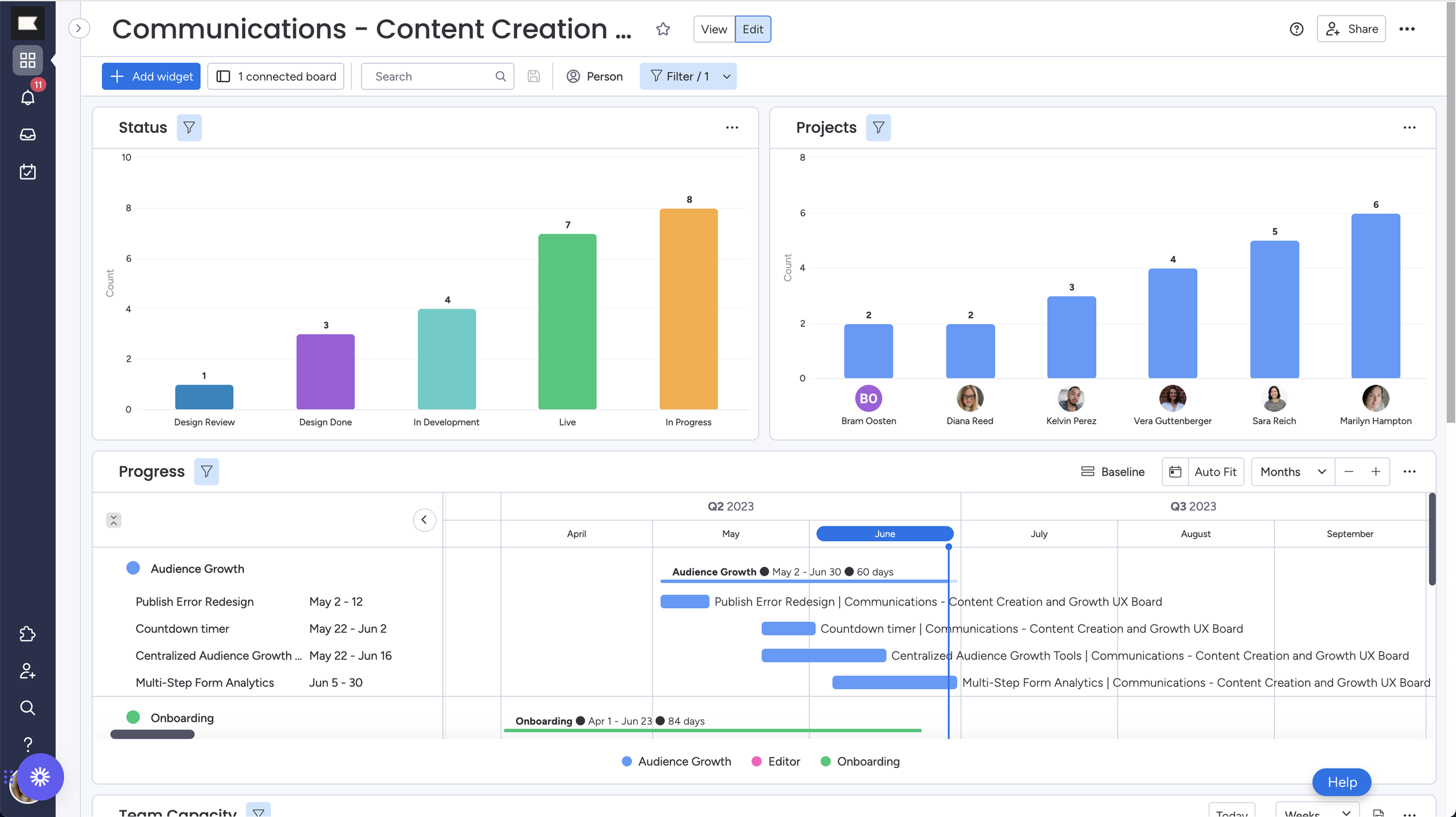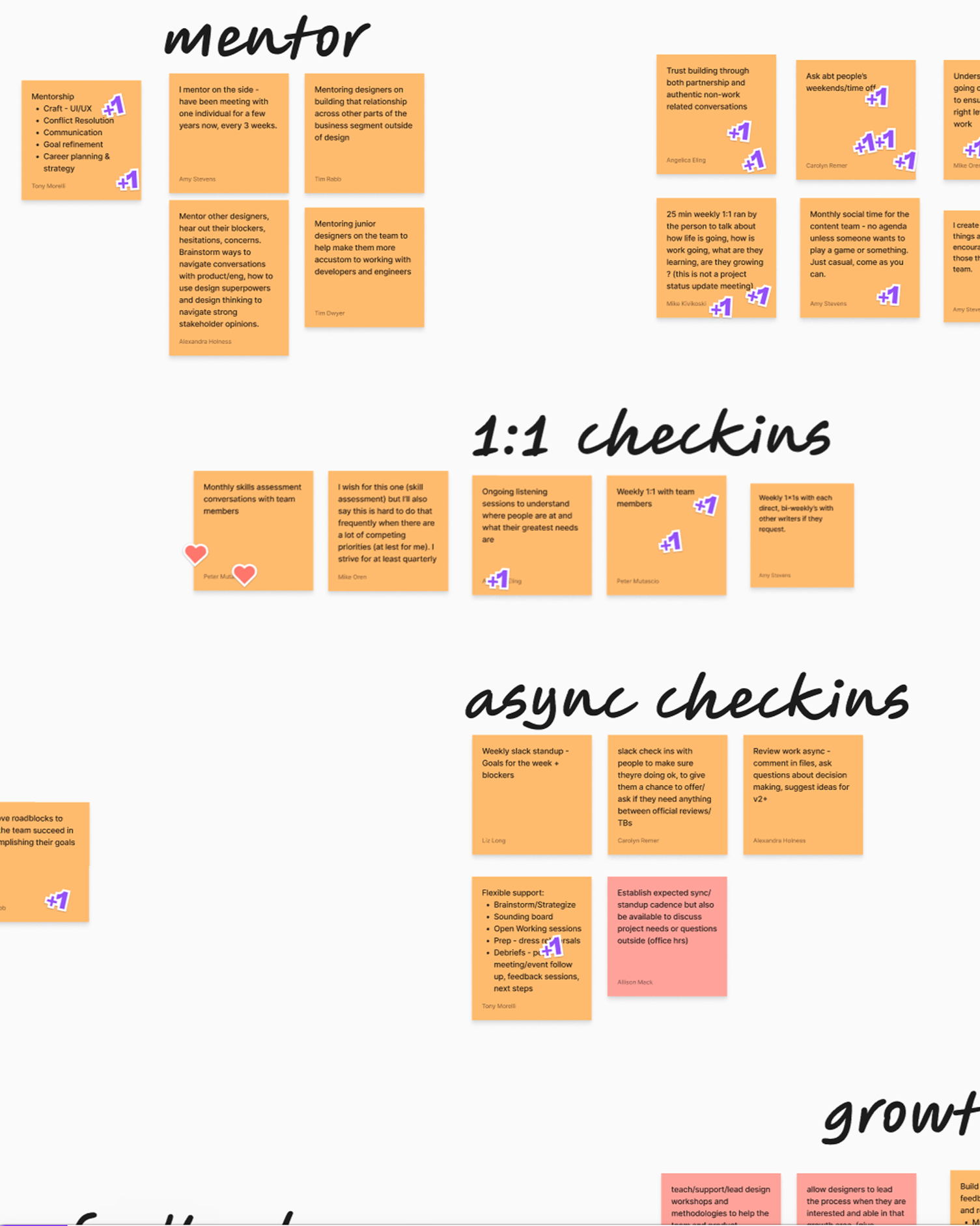Design Leadership
When I joined Klaviyo, the company was in a period of rapid growth. With scale came new challenges: designers needed clearer career paths, stronger coaching, and the ability to influence strategy rather than respond to product requests. At the same time, our design processes lacked consistency, making it difficult for leadership and cross-functional partners to understand progress. Finally, while Klaviyo prided itself on ambition, we had no formal structure to help designers grow their craft and connect.
I saw my role as not just leading the Content Creation and Growth teams, but also shaping the kind of design organization Klaviyo aspired to be.


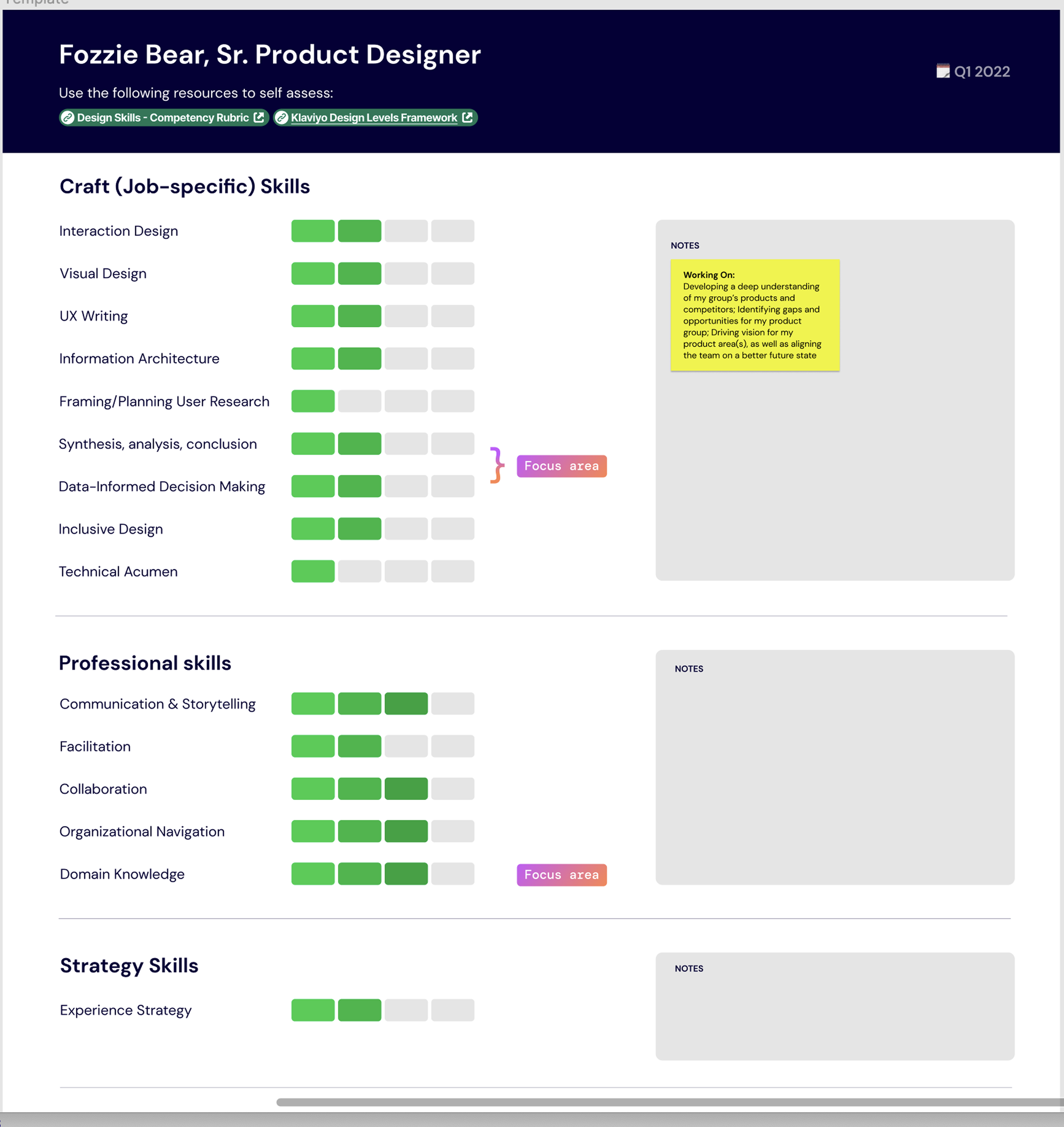
Building Career Growth into the Team’s DNA
I started by getting to know my team members beyond their day-to-day work — their passions, skills, and long-term goals. That foundation allowed me to create growth opportunities tailored to each individual while still meeting business needs. Over three and a half years, I hired six designers onto my teams, sourced talent for three others, and directly coached four designers through successful promotions. More importantly, I encouraged my team to step beyond reacting to product proposals and instead proactively shape the roadmap, partnering with product and engineering to align design impact with Klaviyo’s north star metrics.
Bringing Structure through Agile Practices
At the organizational level, we needed more transparency around the design process and where projects stood. Partnering with Design Ops, I led a pilot program to experiment with agile-inspired processes using Monday.com. By listening to feedback and iterating, we created a model that provided visibility to design leadership and partners alike. Those learnings eventually informed our migration to Jira, which gave us a unified way to track and align design work across the company.
Establishing a Culture of Mentorship
In Q4 2023, I launched the Design Mentorship Program, tied directly to Klaviyo’s ambition of being the best place for ambitious people to learn and grow. The program blended 1:1 mentorship with peer forums, giving designers space to develop craft, product knowledge, and customer empathy. By the end of the first year, 61% of the design organization had joined. By 2024, that number rose to 73%. By 2025, the program expanded beyond design, partnering with engineering to include the entire R&D organization, creating opportunities for cross-functional mentorship and knowledge-sharing.

